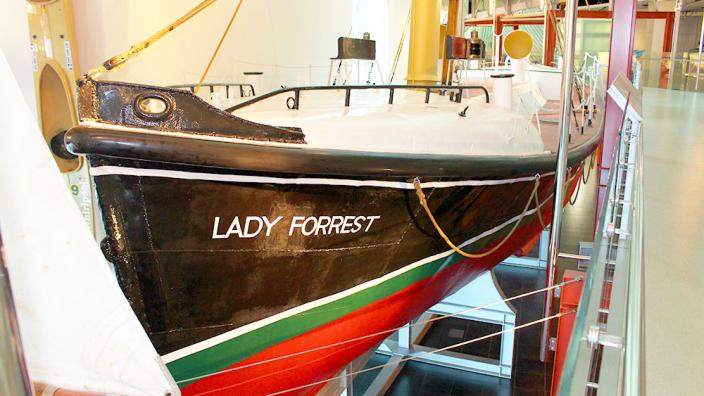7. Lady Forrest, Pilot Lifeboat
In June 1899 the Carlisle Castle was wrecked with total loss of crew. Soon after, six lives were lost when the City of York was also wrecked. Both losses were attributed to inadequate service provided by the Rottnest-Fremantle pilot boat.
The frequent shipwrecks increasingly damaged Fremantle's reputation to provide an effective pilot service to guide vessels into the harbour.
In 1902, Harbour and Lights lodged an order for a purpose-built pilot vessel that could accompany incoming vessels, regardless of weather conditions, and ensure that the local pilot could be put aboard to guide the vessels into the safety of the Fremantle port.
Lifeboats and pilot boats must be steady and easily managed when carrying out rescues and moving alongside other vessels. The new pilot's design was based on the Royal National Lifeboat Institutions standards compiled by James Peake who was an exceptional naval architect for his time.
The length of Lady Forrest's hull was directly related to the distance between two wave crests (this distance determines wave motion). This ratio of length to wave motion was calculated to increase the vessel’s stability and minimise pounding when facing head seas.
Named after the wife of the first Premier of Western Australia, people were initially disappointed with their new acquisition. This initial doubt soon subsided by a proven track record of 64 years chaperoning vessels in all conditions. M.V. Lady Gairdner was commissioned in 1959 and the Lady Forrest became a stand-by pilot.

Image Copyright WA Museum
| Attachment | Size |
|---|---|
| MM_Stop7.mp3 | 2.73 MB |